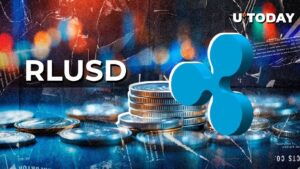When prices of assets in a market fall by 20% or more from recent highs, it is called a bear market. As a result, investor confidence is low, and the economy and market turn pessimistic.
What Is a Bear Market?
A bear market is defined as a market that has lost 20% of its value in the last few months from its previous high point. It is frequently triggered by an economic downturn or a once-in-a-lifetime occurrence that has an economic impact, such as the new Coronavirus.
Why Is It Called a Bear Market?
Some speculate that the bear market got its name from an old saying about not selling a bear’s skin before catching the bear. Others believe that the term is named after the way a bear attacks its prey by swiping its paws downward.
How Long Does a Bear Market Last?
The fact is that bear markets occur from time to time. Since WWII, Wall Street has had 13 bear markets (every five or six years on average), with each one lasting around 362 days—just over a year.
Now, a bear market normally corrects itself, and the economy recovers rather fast. However, if stock values continue to decrease, a recession may result. When the economy stops expanding for a lengthy period of time—usually two quarters or more of negative economic growth—this is known as a recession.
Bear market vs Market Correction vs Pullback
A pullback is a 5% to 10% reduction in price that is merely temporary, generally lasting a few days or weeks. It’s like going through a usual adjustment period, with a small detour from a recent high but no change in the underlying trend.
A bear market occurs when prices fall by 20% or more, and it can persist anywhere from months to years. Investors’ trust gets damaged and the majority of them exit the market. As more investors sell their equities in order to avoid more losses, trading activity decreases.
Examples of Notable Bear Markets
Let’s look at some of the most well-known and severe bear markets, starting with the Great Depression.
The 1929 Great Depression
The Great Depression, which began in 1929, was one of the world’s most extended and severe economic downturns. The global economy did not begin to revive until the late 1930s. Some claim the 1929 US stock market crisis was the spark, while others argue it was more of a consequence than a cause.
The Wall Street Crash of 1929 was a sharp and unexpected drop in stock values on the New York Stock Exchange. This was followed by the London Stock Exchange Crash, all of which signified the start of the Great Depression, which was followed by the “Roaring Twenties,” a period of luxury following World War I.
The fall was caused by excessive anticipation that the market would continue to rise as more individuals began to participate.
The Dot-com Bubble Lasted From 2000 Until 2002.
The late 1990s were a time of rapid expansion for numerous new tech businesses, notably Google, Amazon (NASDAQ: AMZN), and Yahoo!, as the internet’s widespread use fueled the market expansion. The S&P 500 increased by nearly 400% before plummeting by 49% in March 2000.
Prices were driven so high by over-speculation and positive market enthusiasm that they could no longer be justified. As investors continued to pour money into dot-com stocks, supply began to outstrip demand. Despite the fact that more firms wanted to go public, sometimes without a good plan, they nonetheless managed to attract investors to unproductive operations.
The 2007–2009 Financial Crisis
The global financial crisis of 2007–2008 was the worst bear market since the Great Depression, owing to the housing crisis and financial institutions’ excessive risk-taking. The recession came to a head in September 2008, when Lehman Brothers filed for bankruptcy, triggering a global banking crisis.
The S&P 500 lost approximately half of its value as a result of these events, but the market began to rise again in 2009 and entered a bull market that lasted until February 2020.
Bear Market in Cryptocurrency
In December 2017, Bitcoin went from about $20,000 to just over $3,200 in a matter of days, making it one of the most well-known crypto crashes. Following that, it rose in price, hitting approximately $65,000 per coin in April 2021, before plummeting to below $32,000 in May.




